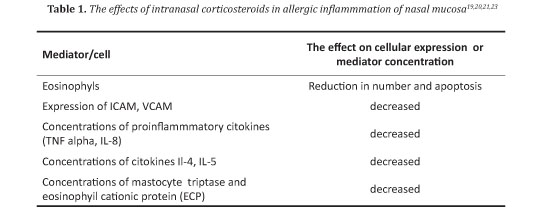
Intranasal Corticosteroids of the New Generation in the Therapy of the Children with Allergic Rhinitis
Abstract
According to a recent epidemiological studies the avarage rate of prevalence of allergic rhinitis (AR) in children, in USA is between 20- 40% and in Western Europe up to 20%. The disease most ferquently appeared in children age 4 to 11. In this study authors analysed the results of the recent studies according to the literature data about the efficacy and safety of the intranasal corticosteroids in children with allergic rhinitis. These drugs as well as antihistamines and decongestants, are the first line therapy choice in allergic rhinitis. According to the numerous experimental and clinical studies, intranasal corticosteroids of the new generation decrease the intensity of allergic inflammmation by induction of apoptosis of eosinopils and by decreased expression of intercelular adhesion molecules (ICAM) and proinflammatory mediators as TNF-alpha, IL-8, Il-4, Il-5. All studies in children showed no significant bioavailability and no effect on plasma cortisol level in therapy with new generation of intranasal corticosteroids.The leading symptom of allergic rhinitis, nasal congestion, was markedly reduced.Intranasal corticosteroids decrease the intensity of simptoms in comorbid diseases in children as sinusitis, secretory otitis media and asthma attacks. The local adverse effects of intranasal corticosteroids such as iritabillity of nasal mucosa, dryness of the nose and mouth, headache and epistaxis are rare. The results of recent studies showed that intranasal corticosteroids of the new generations have high safety profile and are recommended as the first line therapy choice in children with moderate to severe type of persisent allergic rhinitis.
Keywords
allergic rhinitis; children; intranasal corticosteroids
DOI: 10.5457/ams.v39i2.160
